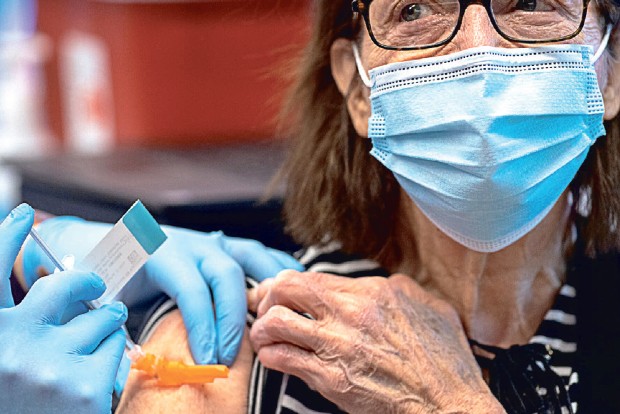Begin typing your search...
One and done: Why folks are eager to take Johnson and Johnson’s vaccine
Only four million doses were shipped this week, and the company’s manufacturing lags mean that it will be at least a month before states start receiving significant supplies.

Chennai
In North Dakota this week, health officials are sending their first Johnson & Johnson COVID-19 vaccines to pharmacies and urgent care clinics, where people who don’t necessarily have a regular doctor can get the single jab. In Missouri, doses are going to community health centers and rural hospitals. And in North Carolina, health providers are using it to inoculate meatpacking, farm and grocery workers. Since Johnson & Johnson revealed data showing that its vaccine, while highly protective, had a slightly lower efficacy rate than the first shots produced by Moderna and Pfizer-BioNTech, health officials have feared the new shot might be viewed by some Americans as the inferior choice.
But the early days of its rollout suggest something different: Some people are eager to get it because they want the convenience of a single shot. And public health officials are enthusiastic about how much faster they could get a single shot distributed, particularly in vulnerable communities that might not otherwise have access to a vaccine.
“This is a potential breakthrough,” said Dr. Joseph Kanter, the top health official in Louisiana. With its first allotted doses, the state is holding a dozen large Johnson & Johnson vaccination events at civic centers and other public places, modelled after what has worked for flu vaccines. As Johnson & Johnson’s production ramps up over the next few months, Dr. Kanter said the shot would allow his state to slash costs for staffing and operations related to the second doses: “The J & J vaccine brings a lot to the table.”
Judged by how well it prevents severe disease, hospitalization and death, the Johnson & Johnson shot is comparable to those made by Moderna and Pfizer-BioNTech. And although it has a lower overall efficacy rate in the U.S. — 72 percent, compared with roughly 95 percent for the others — experts say comparing these numbers is problematic because the companies’ trials were conducted in different places at different times.
The Johnson & Johnson vaccine also can be kept at normal refrigeration temperatures for three months — ideal for distribution at non-medical sites such as stadiums and convention centers. “There are circumstances in which it is going to be a really good option or maybe the best option,” said Dr. Matthew Daley, a senior investigator at Kaiser Permanente Colorado’s Institute for Health Research and a member of the Centers for Disease Control and Prevention’s independent vaccine advisory committee.
Only four million doses were shipped this week, and the company’s manufacturing lags mean that it will be at least a month before states start receiving significant supplies. Because of that gap, state officials are treating the first wave of doses as a moment to test different ways to deploy them. Patrick Allen, the director of the Oregon Health Authority, said that the first doses in the state went to a variety of settings, “to see if we learn anything from its use.” Those included mass vaccination sites around Portland, adult foster care homes and pharmacies not included in the federal government’s pharmacy program. Health officials will evaluate the success of each of those sites to figure out a plan for the larger shipments.
Many state health officials said they were focused on getting the vaccine to people who might be harder to reach for a second dose, such as those who are homeless or on the verge of release from prison. In North Carolina, this category includes the mobile agricultural communities in the state with three- or four-week work seasons. Dr. Mandy Cohen, the state’s health secretary, said that large meatpacking plants in the state such as Smithfield and Tyson Foods were interested in the Johnson & Johnson vaccine and had been consulting with her department.
And because the vaccine tends to have fewer side effects than the other options, it’s appealing to people who don’t want to risk missing a day of work to recover from chills or fever, she said: “There are a lot of folks who are like, ‘I’m much more interested now that you tell me I only have to get a shot one time instead of two.’” “I don’t think it’s an inferior vaccine, and that’s why I’m taking it for myself,” said Dr. Cohen, who was scheduled to get the Johnson & Johnson shot on Friday.
States have been able to customize and tinker with distribution plans in part because the federal government did not issue prescriptive guidelines for where and who the vaccine should go to.
This winter, as the Food and Drug Administration’s authorization of the Johnson & Johnson vaccine approached, federal officials involved in vaccine distribution pushed for the shot to be used in a more centralized way, either at large stadiums and mass vaccination sites run by the Federal Emergency Management Agency or only in pharmacies, according to officials familiar with these discussions.
But the White House preferred to allow states to tailor their own plans, as they had done for the Moderna and Pfizer-BioNTech vaccines. Although health experts are enthusiastic about the potential public health benefits of the new vaccine, some also fear that the public’s interest will wane once vaccines become less scarce. If given the choice among brands, some people may reject Johnson & Johnson’s, seeing it as an inferior choice.
— NYT
Visit news.dtnext.in to explore our interactive epaper!
Download the DT Next app for more exciting features!
Click here for iOS
Click here for Android
Next Story



